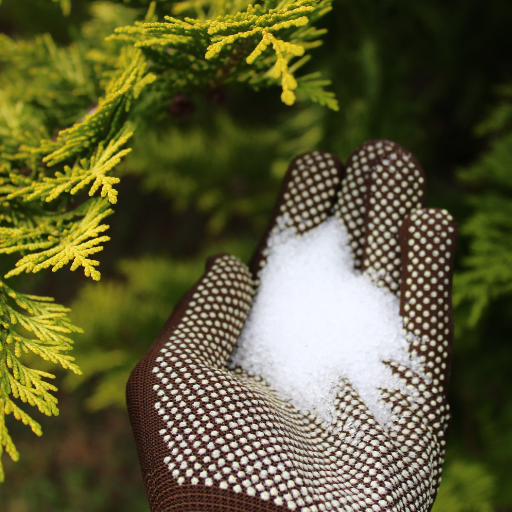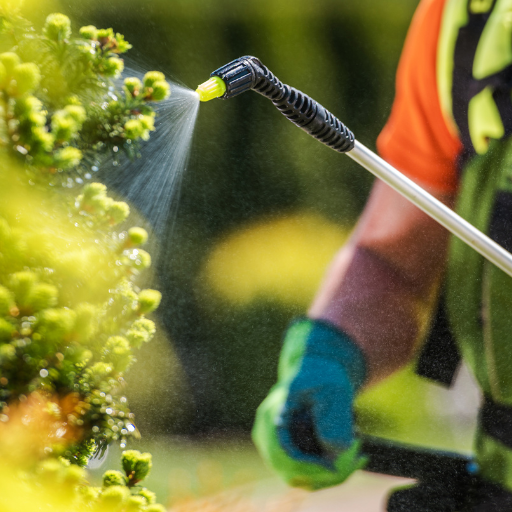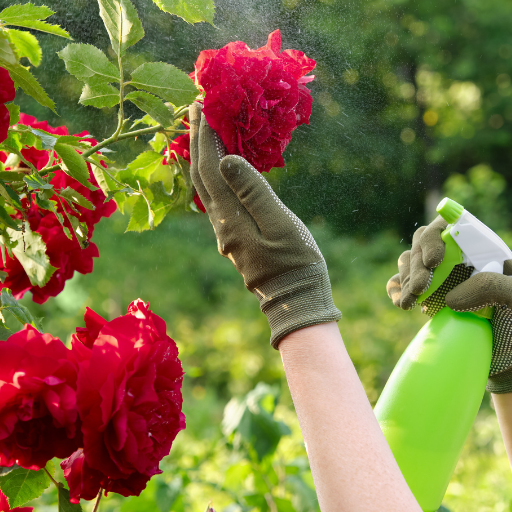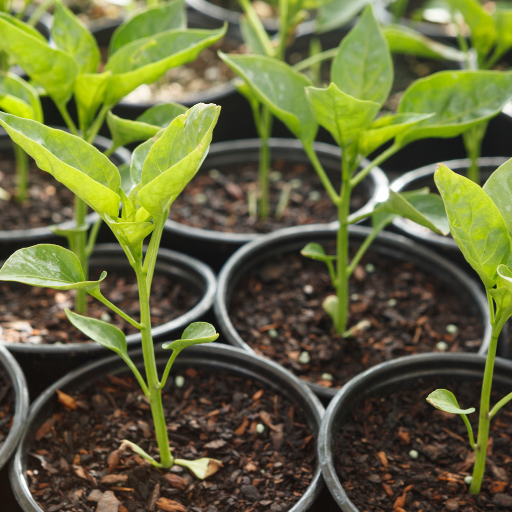Epsom salt, scientifically called magnesium sulfate has been historically known for its usefulness in plant growth improvement and health. Epsom salt is rich in necessary nutrients which are advantageous to a variety of species with magnesium deficiencies. Additionally, chlorophyll production depends on this mineral, hence influencing the photosynthesis process in plants, thus determining the parameter that shows how well it will be able to perform its functions, such as those involved in overall strength and productivity. Similarly, sulfur helps nutrient uptake and improves soil quality. This article explores Epsom salt’s effective use in gardening, what it does, and how to use it so that plants grow best. The comprehensive survey includes coverage of multiple aspects, including different types of plants’ reaction towards the application, investigates the soil interaction aspect, and offers recommendations on using it properly. This way, becoming an ultimate guideline both for experienced gardeners and beginners.
Understanding Epsom Salt and Its Role in Plant Health
Magnesium and sulfur are the two most important nutrients that enhance plant health because they are the essential components involved in growth of plants. Chlorophyll responsible for photosynthesis which is a process of energy production by a plant is formed by magnesium that directly affects how much energy a plant produces and its general strength. Nutrient absorption, enzyme activity as well as formation of amino acids crucial for life takes place with the help of sulfur. The combination of these minerals boosts metabolism and resistance to diseases in a plant resulting into vigorous and productive growth. This approach can be particularly useful when dealing with magnesium-deficient soils; it leads to stronger plants.
Magnesium Sulfate (Epsom Salt)’s Chemical Composition
Usually referred to as magnesium sulfate or MgSO4 in chemical terms, Epsom salt is made up of one sulphur ion (S^6+), four oxygen ions (O^2-) along with one magnesium ion (Mg^2+). The molecular weight of Epsom salt is approximately 120.37 g/mol. Magnesium sulphate appears colorless crystalline substance that dissolves in water at 20°C at 710 g/L concentration. It acts as an enzymatic activator for very many enzyme systems, while the sulfur component also participates in the synthesis of methionine, and cysteine, among others.
At concentrations from five percent solution, Epsom salt pH lies within the range between 6 and 7.5; this means that it does not significantly alter soil acidity when employed thereon. Moreover, it has high solubility making quick absorption possible even under low conditions of elemental deficiencies chiefly for lack of magnesium. In relation to specific needs based on species and soil conditions, it may vary around one or two tablespoons per gallon water typically used.
Essential Plant Nutrients
Plant optimization requires seventeen (17) essential nutrients, which are classified as macronutrients and micronutrients. Macronutrients comprise nitrogen (N), phosphorus (P), potassium (K), calcium (Ca), magnesium (Mg), sulfur (S), carbon (C), hydrogen (H), and oxygen (O), which plants require in large quantities. The primary macronutrients include nitrogen, phosphorus, and potassium, which can be derived from the soil or added with fertilizers.
Adequate soil concentration range for nitrogen for protein synthesis and chlorophyll production is 30-50 mg/L. Phosphorus is involved in energy transfer as well as the formation of genetic material; the appropriate level would be 15-30 mg/L. Activation of enzymes and regulation of water absorption are among the major roles potassium plays in soils with optimum concentrations ranging between 100 to 250 mg/liter. Calcium acts like a cell wall structure at levels around 1000 – 2000 mg/L, while presence of magnesium at about 50 -120 mg/liter is critical for photosynthesis. For amino acid synthesis and enzyme actions, Sulfur content should fall within 20-40mg/liter.
Lesser amounts than those needed from macronutrients are known as micronutrients consisting of iron (Fe), manganese (Mn), copper (Cu), zinc (Zn), boron(B) molybdenum(Mo) ,and chlorine(Cl). Chlorophyll formation requires iron supplementations totaling about 2.5 to4.5ppm while manganese is an essential element during the photosynthetic process when it ranges between 3 and 5 ppm in terms of optimal growth condition.Copper is often present at low levels below1 ppm, but still it has vital physiological function in many enzymatic reactions.Zinc, on the other hand, ranges between .3-.8 ppm, though its deficiency may cause some problems to crop growth, preventing it from reaching maturity. This nutrient is essential for wall organization and fertilization, with an appropriate range of 0.5-2ppm. Molybdenum content is ideal for nitrogen fixation, and enzyme action occurs approximately between 10 to 50 ppb, whereas the range for chlorine is usually from one-tenth to two hundredth that concentration.
This is important because it ensures that plants are healthy, can resist disease and have high yields in farming and gardening.
Benefits of Epsom Salt for Plants

Epsom salt chemically known as magnesium sulfate (MgSO₄), provides many uses to plants, especially in dealing with lack of magnesium which is a vital component for photosynthesis. Magnesium plays a very important part in chlorophyll production, enabling plants to take up sunlight and convert it into energy effectively. Therefore, Epsom salt encourages rich green leaves and improved plant health. Additionally, sulfur, which is also found in Epsom salts, helps in the synthesis of amino acids, enzymes, and vitamins that are necessary for the growth and development of plants.
Applying Epsom Salt Can Result In Improved Nutrient Uptake And Increased Seed Germination Rates. For example, when used as a foliar spray or soil amendment, it promotes the absorption of phosphorus and nitrogen necessary for proper growth. Many gardeners also say that Epsom salt can improve the taste and yield of fruits and vegetables. It is therefore an invaluable addition to any plant care program aimed at maximizing productivity through enhancing growth.
Enhancing Nutrient Absorption in Plants
To boost plant nutrient absorption, consider chelation, acidifying soils, or using beneficial microorganisms. Chelation involves attaching nutrients to organic molecules, thereby making them more available to plant roots. Commonly used chelating agents include ethylenediaminetetraacetic acid (EDTA) or natural agents such as humic acids. The best results come from applying 1-2 grams per liter of water to keep the nutrients available to plant roots.
Soil pH adjustments, on the other hand, are crucial since nutrient availability largely depends on this parameter. Most nutrients are optimally available within a pH range of 6.0-7.0. Such balances should be maintained by regular soil testing, with lime used to increase pH or sulfur deployed to decrease it.
Lastly, integrating beneficial microorganisms like mycorrhizal fungi and nitrogen-fixing bacteria can greatly enhance nutrient absorption. These symbiotic organisms increase root growth and surface area for nutrient uptake. While application rates vary, it is common to mix 1 teaspoon of mycorrhizal inoculant with the soil per gallon of potting mix.
Gardeners can significantly improve nutrient absorption efficiency by using these techniques, leading to healthier, more productive plants.
Facilitating Magnesium Uptake
Magnesium is an essential macronutrient involved in chlorophyll production, activation of enzymes and overall plant metabolism. To ensure effective magnesium uptake, it is necessary to maintain soil pH within optimum levels (6.0-7.0) as extreme pH conditions may hinder nutrient availability. The use of Epsom salts (magnesium sulfate) is a common practice; dissolve one tablespoon per gallon of water and apply this solution as a foliar spray or soil drench every 2-4 weeks. Soil structure and magnesium retention can be improved by incorporating organic matter such as compost into the soil. Regular testing of soils should be done to monitor magnesium levels and adjust supplementation accordingly.
Boosting Photosynthesis Efficiency
Several key factors must be well understood and optimized so as to boost photosynthesis efficiency. Light intensity has to be adequate; photosynthesis saturates at different light intensities depending on the nature of the plant species, often around 1,200 – 2,000 µmol m⁻² s⁻¹ for many crops. Having an optimal spectrum primarily in blue (400-500 nm) and red (600-700 nm) wavelengths increases chlorophyll absorption thereby enhancing photosynthetic efficiency
Another significant factor is the level of carbon dioxide (CO₂). Photosynthesis can be significantly accelerated by increased CO₂ in the atmosphere, with optimum levels usually between 1,000 and 1,200 ppm for most greenhouse crops. The right temperatures are also critical; photosynthetic activity usually peaks at 20-30°C (68-86°F).
Suffice it to say that good water management is essential since turgor pressure should be maintained for stomatal opening. This helps in effective uptake of CO₂ as well as transpiration processes. On the other hand, nutrient management especially having enough amounts of nitrogen, magnesium and iron are vital in synthesizing both chlorophyll molecule and other pigments involved in photosynthesis.
In conclusion, light quality and intensity optimization, increasing CO₂ concentration, maintaining an appropriate temperature range, ensuring adequate water availability, and nutrient management are key factors necessary for improving photosynthetic efficiency. Therefore, these factors collectively impact plant growth improvement and productivity increase.
Methods of Applying Epsom Salt to Plants

There are numerous effective ways for applying Epsom salt to plants, each with specific purposes and plant requirements. One of them is foliar spray which includes dissolving Epsom salts in water (usually 1 tablespoon per gallon) and spraying the solution on leaves uniformly. This technique allows magnesium and sulfur to be immediately absorbed through the foliage thus making it an ideal remedy for quick fixes of deficiency situations. Another method is soil drenching. In this case, one can dissolve Epsom salt in water at the same concentration as mentioned above and then apply it directly into the soil. This process improves soil magnesium levels and ensures plant roots’ long-term nutrient uptake. As well, by spreading Epsom salt around the base of a plant as a dry application followed by thorough watering to enable dissolution and penetration into soil also works Additionally, this method is frequently used in garden beds as well as larger areas set aside for planting. By alternating these application methods regularly overall health and growth of plants can be effectively supported.
Incorporating Epsom Salt into Soil Amendments
To incorporate Epsom salt effectively into soil amendments that improve plant nutrient availability and enhance soil structure requires blending it with compost or other organic matter to balance the amendment mixture recommended here. It assists in draining water from the land while giving out important elements such as sulphur and magnesium needed by crops. Adding 1-2 tablespoons of Epsom salt per gallon of compost ensures an even distribution of nutrients for general use. Additionally, mixing gypsum or lime with Epson salts will help meet particular needs in soils hence provide customized solutions for crop nutrients that are applied enerally towards their benefit improving not only their growth but also promoting a better more resilient soil ecosystem.
Proper Dilution Rates for Foliar Sprays
Specific concentrations should be adhered to for proper dilution rates for foliar sprays to avoid damaging plants while ensuring optimal absorption of nutrients. A common dilution rate for foliar Epsom salt sprays is 1 tablespoon per gallon of water. This concentration provides an efficient delivery of magnesium and sulfur, aiding in synthesizing essential plant compounds.
When preparing the solution, dissolve Epsom salt thoroughly in warm water before adding it to the spray bottle to avoid clogging the nozzle. The pH level of your solution should range between 6.0 and 6.5 since most plants can tolerate this range and get better nutrient uptake.
It is better to use this foliar spray early in the morning or late evening for more effectiveness. Therefore, these times minimize evaporation as well as sunburns on leaves if applied during full sunlight hours. Moreover, ensure all parts of the plant are covered evenly with special attention paid to lower leaf surfaces where there are more stomata for easy absorption. Routine application is typically done every two weeks in order to supply important elements hence increasing plant vigor continuously.
Timing and Frequency of Application
Understanding when you should apply foliar sprays and how often you should do it will maximize their benefits; hence timing has a lot to do with it. Foliar sprays are recommended every two or three weeks during the growing season generally speaking Timing should coincide with early morning or late evening to minimize evaporation and potential leaf burn. With such frequency, plants receive enough nutrients required for constant growth rates throughout their lifetime
Moreover, other factors like temperature and humidity can affect foliar applications’ efficiency. Between 65° F and 85°F is the right temperature range for optimal absorption. Doing it during colder times also makes it dry slower because of which more nutrients will be able to enter.
However, timing and frequency will depend on the specific requirements of the plant species and its stage of growth. Improving application timetables vis-à-vis plant health can make nutrient delivery more focus-driven and result-oriented.
Specific Plant Applications for Epsom Salt

Epsom salt, a pure mineral compound of magnesium and sulfate, is highly beneficial for various plants. For tomatoes, it can prevent blossom-end rot, a condition linked to magnesium deficiency, by applying 1 tablespoon per foot of plant height diluted in water as a foliar spray or mixed into the soil at planting. Roses particularly thrive when Epsom salt is used as it can enhance flower production and color. Apply ½ cup of Epsom salt to the plant base or as a liquid solution every two weeks. On peppers, Epsom salt improves root and cell development and enhances nutrient uptake. A mixture of 1 tablespoon per gallon of water can be sprayed every two weeks during the growing season. Houseplants can also benefit; monthly watering with 2 tablespoons per gallon of water promotes vibrant, lush growth.
Benefits for Vegetable Crops
Several benefits are associated with Epsom salt use in vegetable crops with its major advantage being its ability to provide magnesium and sulfur easily available from sources. These nutrients are essential for various physiological processes in plants such as chlorophyll production and enzyme activation. When applied properly, Epsom salt can improve the overall healthiness, productivity and flavoring of vegetable crops.
- Tomatoes: Using epsom salts often will safeguard against conditions like blossom-end rot that could hamper good growth. To achieve best results, mix one tablespoonfuls Epson salts per foot high into (diluted with) water then apply it on leaves or pour around the stem when planted in soilatics. This can be done twice in two weeks throughout their growth period.
- Peppers: Epsom salt’s comprehensive nutrient profile aids in improving fruit set and size.Apply 1 tbs/ gal bi-weekly to ensure adequate magnesium uptake during flowering and fruit set.
- Leafy Greens (e.g., Spinach, and Lettuce): These crops greatly benefit from Epsom salt applications, which help boost chlorophyll levels, leading to more vibrant and healthy leaves. A general recommendation is to use a mixture of 1 teaspoon per gallon of water as a foliar spray every four weeks.
Enhancing Flowering Plants and Ornamentals
Epsom salt is also highly beneficial for flowering plants and ornamentals due to its magnesium content, which plays a pivotal role in chlorophyll synthesis and photosynthesis. Magnesium is a critical component of the chlorophyll molecule, and its presence ensures efficient energy production and healthy plant growth. By improving the absorption of other essential nutrients like phosphorus and nitrogen, Epsom salt contributes to more robust and vibrant blooms.
- Roses: Regular Epsom salt application can promote strong basal cane development and enhance overall flowering. The typical recommendation is to mix ½ cups into the soil at planting and then follow it up with 1 tbsp/ gal once every fortnight all year round for leaf spraying.
- Azaleas and Rhododendrons: These acid-loving plants often suffer from magnesium deficiency, which can be mitigated by Epsom salt application. Mix 1 tablespoon of Epsom salt per gallon of water and apply as a soil drench monthly during the growing season to enhance leaf color and bloom quality
- Bougainvillea: To make them thrive and produce many flowers, Bougainvilleas can be sprayed with a solution of 1 tablespoon Epsom salts to every gallon of water as a foliar spray about once in a month. This is because it meets the high demand for magnesium during active growth and flowering periods.
Supporting Trees and Shrubs
Epsom salts have an equal advantage on trees and shrubs; this is due to its content of magnesium and sulfur that are important in various physiological processes. Magnesium, therefore, assists in photosynthesis by forming the major component of chlorophyll molecule, while sulfur is essential for amino acid synthesis as well as protein synthesis. The following are some recommendations on how to use Epsom salt on trees and shrubs effectively:
- Deciduous Trees: These trees drop their leaves annually; thus, Epsom salts help boost leaf production while enhancing overall vitality. A common practice involves spreading 2-3 pounds of Epsom salt over the root zone of a tree broadcasted annually early in spring. Make sure the distribution of salt is uniform, and it should be soaked with water.
- Evergreen Trees: Yellowing needles may result from a lack of iron, so applying Epsom salt will correct this deficiency at the same time promoting healthy growth. It means using one pound per ten feet tree height that should be scattered across the root zone before being deeply watered in spring.
- Shrubs: Bloom quality as well as yields can be improved by applying Epsom salt onto ornamental or fruit-producing shrubs. Within each gallon of water, mix one spoonful then either pour it over the soil or spray over the leaves through which they can dissolve into plants’ roots systems. This would take place monthly all year round during the growing season, thus ensuring there is a constant supply of nutrients.
Environmental Considerations and Soil Health

One must be very cautious about applying Epsom salt to soil to avoid any negative effects it may cause in the long run. Though it can be useful, overuse of Epsom salt can result in an excess of magnesium sulfate that could disrupt its natural chemical balance. Before application, carry out a soil test to establish the current levels of magnesium and avoid over-saturation which may affect soil structure and subsequent plant performance. Moreover, sustainable gardening will encourage the utilization of organic matter and composts together with Epsom salts to keep up soil biodiversity and ensure long term good health.
Impact on Soil pH and Nutrient Balance
The pH value as well as general nutrient balance in the soil has been affected by addition of Epsom salt into it. Magnesium sulfate (MgSO₄) commonly referred to as Epsom salt does not alter the acidity or alkalinity levels directly since it is neutralized but on further thought, frequent applications might unbalance the nutrients in soils by adding too much magnesium. The presence of too much magnesium in soils interferes with uptake of other important mineral elements most especially potassium (K) and calcium (Ca), leading to deficiency disorders that affect plant life negatively.
Magnesium is soluble when converted into ions thus giving plants easy access while at high levels it results in challenges such as compaction within soils thereby leading to poor drainage systems which affects root growth hence water infiltration rate. For precision reasons, any emphasis on testing soils must reveal a 100-200 ppm (parts per million) level for this chemical element in order to sustain perfect nutritional needs. If your magnesium concentration surpasses 200 ppm then you may need reduce or stop putting more amounts or additions instead consider using gypsum among other soil amendments so as to counteract any possible imbalances.
Interaction with Soil Microorganisms
Soil microorganisms play a crucial role in maintaining fertility and health of soils; they also interact heavily with nutrients brought about by things like Epsom salts. One of the main compounds found in Epsom salts is magnesium which is necessary for microbial life functions as well as growth. But high levels of this mineral can upset an ecological balance among microbes, promoting their own preferred populations while suppressing other types causing a drop in biodiversity. These are nitrogen-fixing bacteria and certain fungi that are responsible for recycling nutrients. It has been observed that optimum amounts of application lead to the development of beneficial microbes through provision of nutrients. Overdoing this may cause imbalance making the soil very unfavorable for microbial action and structure. Therefore, it is advisable to assess the amount of magnesium present in your soil before you begin using it thus putting into consideration advice from a specialist who deals with all these test samples so as to have a healthy diversity within our gardens’ ecosystem.
Monitoring Plant Response to Epsom Salt

Monitoring plant response to Epsom salt requires assessment of different growth parameters and physiological markers. It is essential to watch out for any visible signs of magnesium deficiency such as yellow leaves or weak plants that may prompt the application of Epsom salts on them. However, one needs to be careful to observe symptoms of over-application such as poor development and leaf scotch. Furthermore, regular soil tests enable the growers to know if the nutrient levels have gone down and whether they are still within the acceptable levels for magnesium. Additionally, knowing how much of what minerals plants need can determine their application rate and frequency.
Assessing Plant Health and Vitality
Evaluating plant health and vitality is a complex process considering various physiological and morphological factors. Important indicators are leaf color, structure, turgidity etc. Healthy plants have bright green leaves indicating adequate amount of chlorophyll pigment required for proper photosynthesis. Yellowing or chlorosis are common symptoms expressed when nutrients are scarce such as nitrogen or magnesium.
Also pivotal is assessing root health. Strong root systems with many branches and firm white roots point towards good uptake rates of nutrients by the entire plant system, thus healthy plants, while blackened/mushy roots signify excessive watering, inadequate soil ventilation, or ill health in roots.
Measurable technical aspects include chlorophyll fluorescence measurements, LAI (leaf area index) determinations and SPAD (Soil-Plant Analysis Development) meter readings among others.Calculated at 0.6-0.8 units for normal functioning plants chlorophyll fluorescence indicates efficiency in photosystem II.The LAI can give insights into foliage densities with optimum values ranging from 3-6 varying with plant species.SPAD readings measure chlorophyll amount whereby greater than 35 indicate enough nitrogen content usually.
Moreover, it is important to frequently monitor soil moisture content using soil probes on-site or through laboratory analyses as well as nutrients by periodically buying soil test kits. Adequate soil water levels should be maintained at between 20 to 60 percent of field capacity for most crops whereas nutrient levels must match with crop specific requirements as determined by thorough soil tests.
Plants need to be checked periodically to maintain their health and increase productivity levels, even under any cultivation setup.
Signs of Epsom Salt Overuse or Underuse
Signs of Excessive Epsom Salt use:
Exceeding the appropriate level of Epsom salt (magnesium sulphate) could have negative impacts on plants due to imbalance in nutrients. One way is through leaf scorching which involves the development of brownish edges that turn crisp as a result of high magnesium concentration blocking calcium uptake. Poor nutrient absorption also leads to stunted growth rates. High EC values above 2 dS/m from soil analysis indicate saline conditions caused by excessive application of salts.
Signs of Underuse Epsom Salt :
The most common manifestation of inadequate application of Epsom salt is magnesium deficiency symptoms. Obvious among them include interveinal chlorosis, whereby leaf veins persist green while the spaces between them turn yellow. Another significant symptom is purplish red pigmentation on older leaves due to impaired synthesis of chlorophylls. Corresponding SPAD meter readings below 35 can further confirm the diagnosis of insufficient supply of magnesium. Root growth may also be adversely affected, as indicated by low root biomass in soil analysis, which can be attributed to the role of magnesium in energy translocation and nutrient movement through plants.
Applying it according to plant’s need
When applying Epsom salts based on a particular crop’s requirement, start with a complete chemical analysis of the soil to determine its current magnesium levels. Soil pH, electrical conductivity (EC), and available Mg content should be tested for. The optimum level for soil magnesium content ranges between 50 mg/kg to 120 mg/kg for most crops, whereas desired pH values should fall within 6.0 and 6.5, respectively. If there is a shortage in magnesium contents, then consider applying an additional amount of it at a rate not exceeding 10-20 pounds per acre until after four weeks. Thereafter, carry out follow-up soil tests.
Another important step is monitoring plant tissue. It provides real-time data about levels of magnesium which usually range from .25% – .50% on dried weight leaves basis considered as good concentration ratio on average leaf dry matter basis (Zou et al). For quicker diagnoses and adjustments indirect chlorophyll content measurements using SPAD meters are often recommended because they are special tools designed specifically for this purpose (R Core Team). Optimal SPAD readings are between 35-45, depending on the various crops used in this study.
To avoid adverse antagonistic effects one must observe other macronutrients when applying Epsom salt. Excessive magnesium can hinder the absorption of calcium and potassium thus soil and foliar nutrient management plans should integrate balanced fertilization strategies (Zou et al). If EC values are above 2 dS/m, initiating corrective measures like increased leaching by irrigation is better. Detailed records of application rates, timing, and environmental conditions are indispensable for adjusting future practices and ensuring sustainable cultivation management.
Frequently Asked Questions (FAQs)
Q: Why should I use Epsom salt in the garden?
A: Epsom salt in the garden is beneficial because it provides magnesium and sulfate, which are key nutrients that help plants grow bushier and healthier. It can improve the overall health of the garden soil, making it a valuable addition for garden plants, especially for peppers and tomatoes.
Q: How much Epsom salt should I add to my garden soil?
A: The general recommendation is to add two tablespoons of Epsom salt per gallon of water and use it as a soil drench for garden plants. For potted plants, use one tablespoon of Epsom salt per gallon of water. Always avoid adding too much Epsom salt, as excessive amounts can harm plants.
Q: Is Epsom salt good for tomato plants?
A: Yes, Epsom salt is good for tomato plants because it helps in providing magnesium, which is essential for their growth. Adding Epsom salt can aid in preventing blossom end rot, enhancing nutrient absorption, and making the plants bushier.
Q: Can Epsom salt help prevent blossom end rot?
A: Yes, adding Epsom salt can help prevent blossom end rot in tomato and pepper plants by supplying magnesium, a necessary nutrient that supports the plants’ uptake of calcium, which is often linked to preventing blossom end rot.
Q: Are there specific tips for using Epsom salt in the garden?
A: Yes, some tips for using Epsom salt in the garden include: dissolving two tablespoons in a gallon of water for a soil drench, sprinkling a cup of Epsom salt per 100 square feet of soil, and using an Epsom salt solution as a foliar spray. Use it sparingly to avoid over-application.
Q: What is the correct way to use Epsom salt on plants?
A: The correct way to use Epsom salt on plants is to dissolve it in water and apply it directly to the soil or use it as a foliar spray. For vegetable gardens, two tablespoons of Epsom salt per gallon of water is a common dosage. Ensure even distribution around the base of plants.
Q: Can Epsom salt be problematic for plants?
A: Yes, while Epsom salt can be beneficial, some plants don’t like Epsom salt or can be harmed by over-application. Using too much Epsom salt can deplete the soil of other essential nutrients, leading to imbalance and poor plant health. Always follow recommended guidelines.
Q: How does Epsom salt benefit pepper plants?
A: Epsom salt benefits pepper plants by providing magnesium, which helps in chlorophyll production and enhances nutrient uptake. This can lead to healthier plants, improved fruit yield, and prevention of issues such as blossom end rot.
Q: What are the key nutrients in Epsom salt?
A: Epsom salt contains two key nutrients: magnesium and sulfate. Magnesium is crucial for photosynthesis and nutrient absorption in plants, while sulfate aids in the formation of plant proteins and vitamins.






